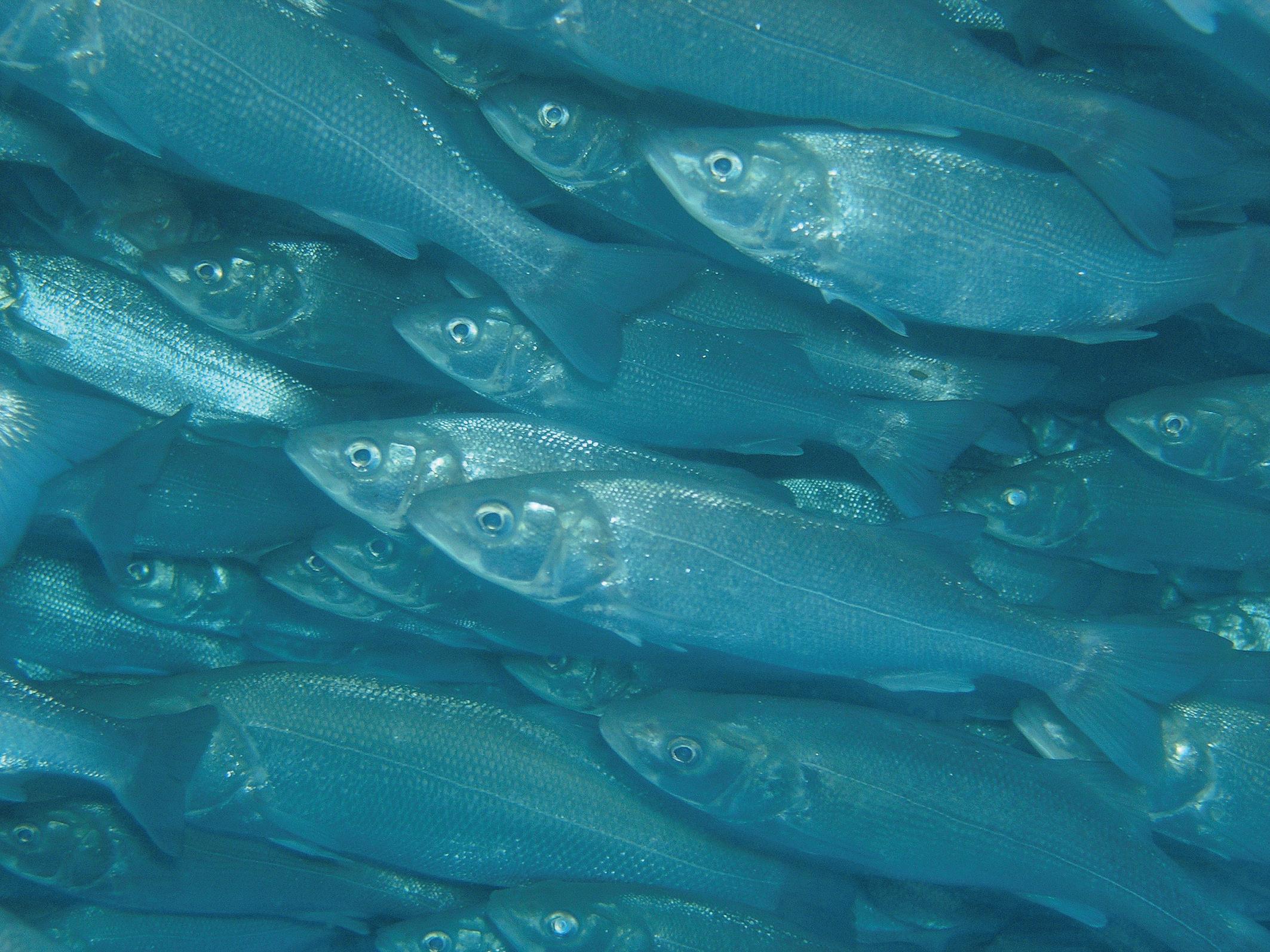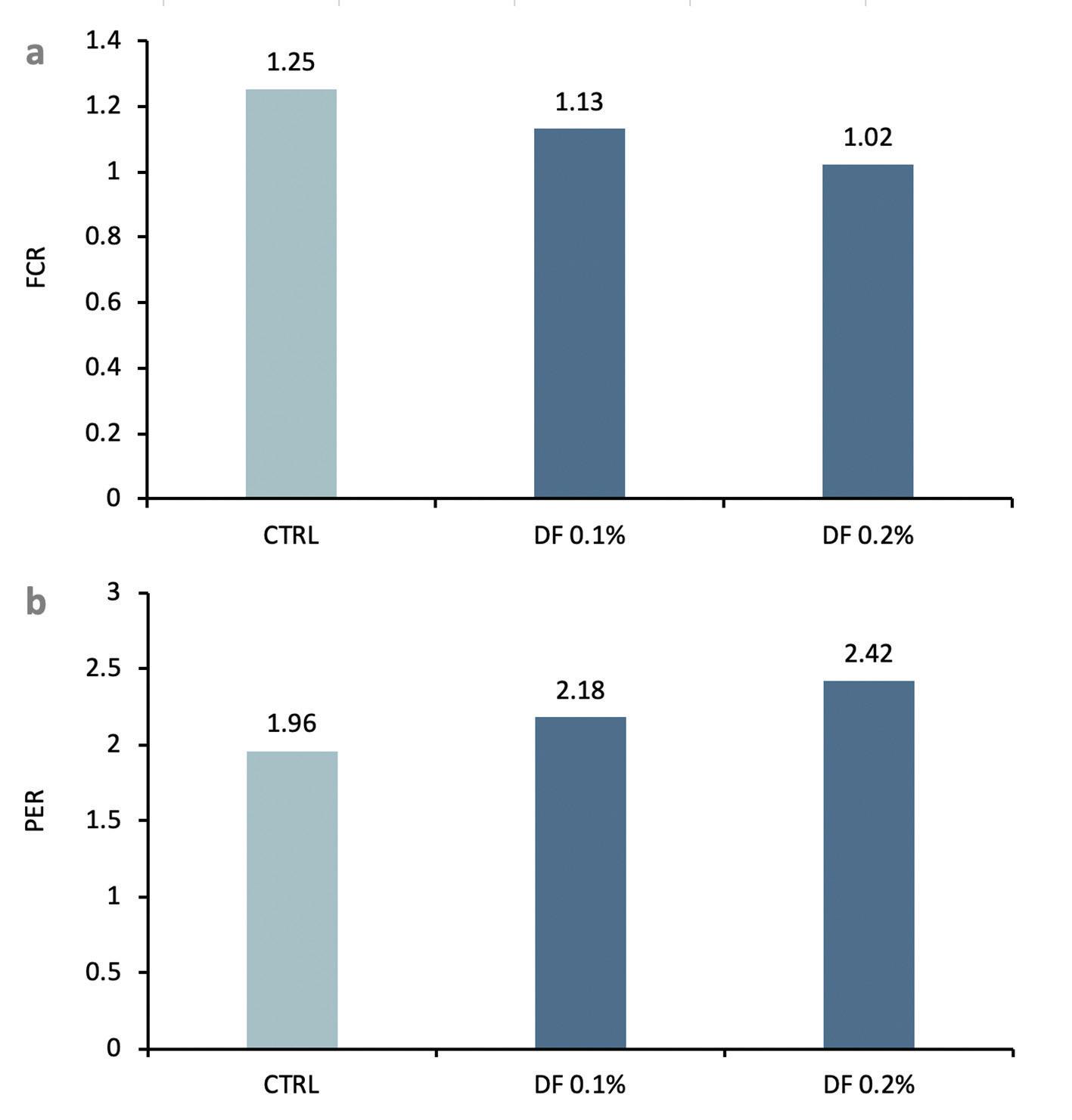
5 minute read
Biosurfactants: A new nutritional concept in aquaculture exhibitors
Biosurfactants: A new nutritional concept in aquaculture
Carlos Rodriguez, Álvaro Rodríguez, Ewa Sujka, Liptosa
Lipids are a group of natural organic compounds comprised of fats, oils, phospholipids and sterols. Dietary lipids are utilized in aquafeeds as a major source to spare protein. They also influence flavors and texture, are a highly digestible concentrated source of energy that supplies 8-9 Kcal/g and provide fatty acids needed for the proper functioning of many physiological processes (Nantes, 2015). Moreover, it is important to consider that fish oil is an expensive raw material in aquafeed production and nutritionists must optimize the inclusion and digestion of dietary lipids.
Reduction of FISH IN : FISH OUT (FIFO) ratio using vegetable-sourced oil instead of fish oil is a current trend in the aquaculture industry to meet sustainable performance requirements. Therefore, boosting the digestion process is an important issue.
Emulsifiers to increase lipid digestibility Depending on the type of added oil, digestibility will vary. Unsaturated fats are much more digestible than saturated fats. Emulsifiers show more efficiency when the fatty acid profile of the added fat is more saturated, although they are also able to increase the digestibility
of the unsaturated fraction of vegetable oils, as in the case of soybean and rapeseed oils.
In order to supply a product to cover the requirements and needs of lipid digestion, LIPTOSA has designed and manufactured Digest Fast, an outstanding biosurfactant made up of a combination of botanicals with emulsifying substances.
The emulsifiers used in animal nutrition are aimed at increasing the digestibility of the feed added lipids that are also effective tools in the optimization of the formulation costs, as increased digestibility allows reduced inclusion of added oils. Emulsifiers increase the active surface of lipids, allowing a higher action of the lipases and favoring the formation of micelles. Its positive effect is more pronounced with lower digestibility of dietary lipids.
Herbal extracts play an important role in the maintenance of good health of the liver and/or hepatopancreas. It is considered of big importance to avoid possible liver disorders such as hepatic steatosis, a process responsible for the loss of liver functionality. Lipid infiltration in hepatocytes during periods where fish are subjected to intensive feeding leads to the
Figure 1. Feed Conversion Ratio (FDR; a) and Protein Efficiency Ratio (PER; b) on seabass feed on diets with different levels of Digest Fast (DF). Trial run by Sparos.

Figure 2. Fat retention (a) and energy retention (b) on seabass feed on diets with different levels of Digest Fast (DF). Trial run by Sparos.

partial loss of liver functionality and consequently reduction of zootechnical performance.
Some of the fish species, such as salmonids, sea bream, seabass and meagre, tend to accumulate visceral fat at liver level, which leads to the reduction of expected growth. The mobilization of liver fat, thanks to the botanicals included in Digest Fast, favors the functionality of hepatocytes during the whole productive cycle.
Digest Fast has also shown beneficial effects in the prevention and resolution of degenerative liver conditions of different etiological issues due to the presence of toxic or infectious agents, allowing hepatic cell regeneration, reversing the process and contributing to the recovery of function.
Biosurfactants trials in European seabass Digest Fast was tested in several laboratory tests as well as field trials. In this paper, we would like to share the summary of trials on European seabass (Dicentrarchus labrax) run by Sparos Research Center (Portugal) and at Aydin Adnan Menderes University (Turkey).
In the trial conducted by Sparos Research Center (Portugal), two different levels of Digest Fast were included in a control diet replacing a percentage of the added soybean oil (DF (Digest Fast) 0,1% = Ctrl - 1% soybean oil + 0,1% Digest Fast; DF 0,2% = Ctrl - 2% soybean oil + 0.2% Digest Fast).
Results showed a significant zootechnical improvement in both Digest Fast diets when compared with the control diet, showing the effectiveness of Digest Fast as a substitute for soybean oil, reducing the cost of feed with the subsequent lower production cost.
An increase in terms of energy retention, protein efficiency ratio (PER) and fat retention was obtained in fish fed with Digest Fast which opens the possibility of improvements in the performance of eviscerated and filleting, which provides a competitive economic advantage of maximum interest for farmers.
After the 63-day feeding trial, DF 0.2% showed a significantly higher final body weight (FBW) and specific growth rate (SGR) than control and DF 0.1%. DF 0.2% showed a significantly lower feed conversion ratio (FCR) than DF 0.1% diet. Digest Fast supplemented diets showed a slightly higher digestibility of fat and energy. This higher digestibility could explain the significant beneficial effects on the overall growth performance criteria.
The 4-month trial carried out at Aydin Adnan Menderes University (Agriculture Faculty, Department of Aquaculture and Fisheries) also showed the best results with feed that included the nutraceutical Digest
Fast when compared with a control diet. It might be helpful to note the outstanding hepatic state considering the area of infiltration of hepatocytes, somatic hepatic index and liver weight of the fish feed on the diets with different commercial emulsifier levels.
Conclusions Digest Fast is a very useful tool for aquaculture nutritionists. Its inclusion in the feed formulation will guarantee optimal liver health and functionality resulting in a significant enhancement in the zootechnical performance. Digest Fast is much more than an emulsifier thanks to the synergy achieved between its botanical and emulsifying ingredients.
Feeding cost is the biggest part of overall production costs in aquaculture, so all efforts toward nutritional and handling improvements will have a positive impact on farm profitability. Digest Fast can help optimize this concern, reducing the percentage of inclusion of fat in diets, enhancing the absorption of fat-soluble nutrients such as vitamins and pigments, and with the possibility of boosting the digestibility of unsaturated fatty acid fraction in aquafeed and the digestibility of saturated fats.

More information: Carlos Rodríguez Aquaculture Technical Support Liptosa, Spain E: carlos.rodriguez@liptosa.com; Ewa Sujka Commercial director Liptosa, Spain E: esujka@liptosa.com; Álvaro Rodríguez Aquaculture Area Responsible Liptosa, Spain E: ara@liptosa.com.






